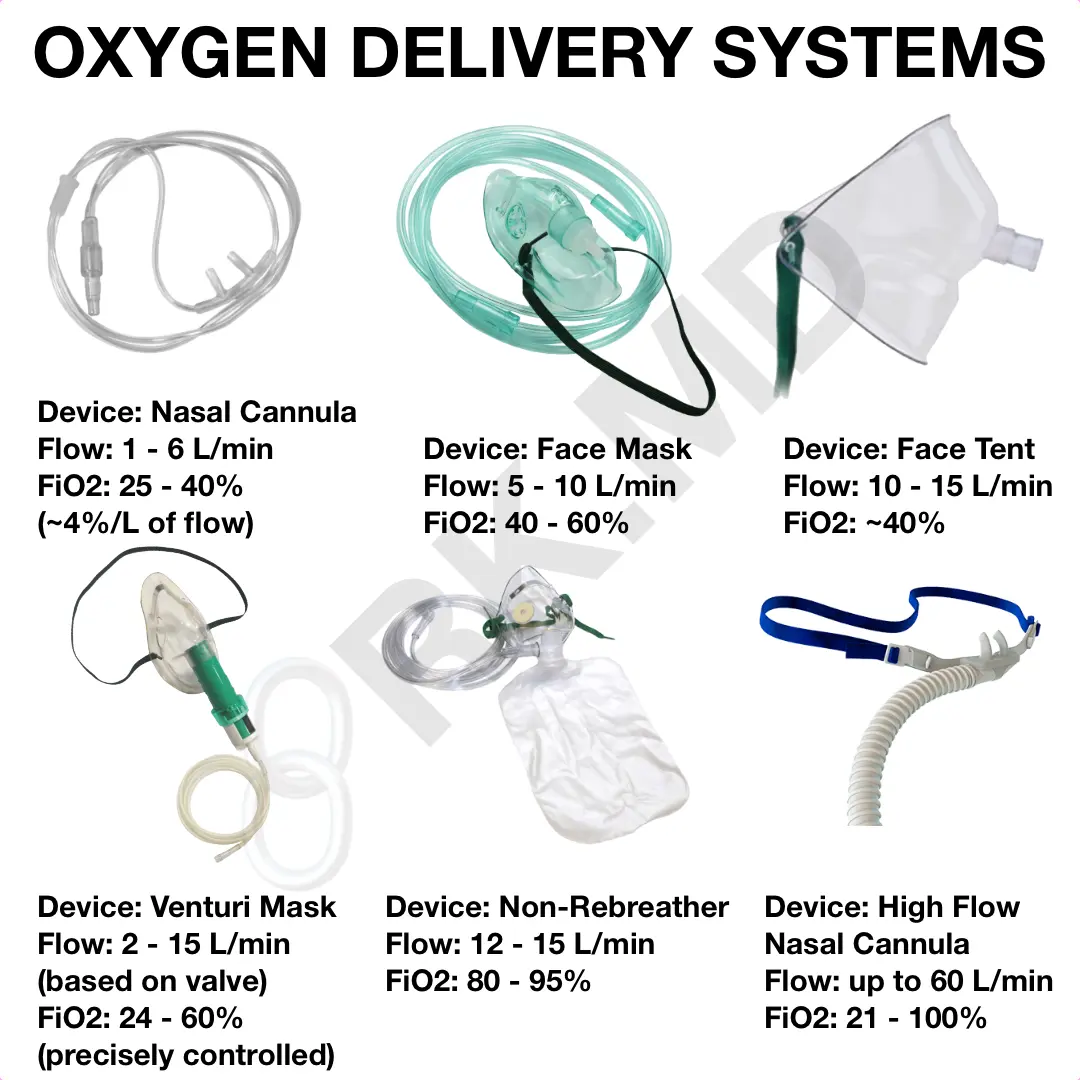When discussing options for hypoxemia, there seem to be so many noninvasive oxygen delivery systems! Nasal cannula, high flow nasal cannula (HFNC), non-rebreathers (NRB), and more are routinely used in the settings I’ve worked in.
Without getting into too many details (patient comfort, ventilatory status, nebulizer therapy, inhaled pulmonary dilators, “rules” about certain systems requiring ICU-level care, etc.), this diagram illustrates the common oxygen flows and resulting fraction of inspired oxygen (FiO2) one can expect. Keep in mind that often times these devices are fitted with humidifiers for comfort and to enhance mucociliary function. Shout out to the respiratory therapists and nurses who are constantly involved with maintaining and weaning these devices!
Drop me a comment below with questions! 🙂







I have a question. I currently use a regular nasal cannula and have severe irritation on my face, behind ears and all over my neck. I have used a cannula for over two years. I am on 2-4 liters of oxygen depending on my activity level. I am told I am almost at level 4 with my copd. I am 74. Can you recommend a different kind of oxygen mask for me? One that causes less face/neck irritation.
Hey Joyce Bezier, thank you for your question. I don’t know specific nasal cannula causing less iritation in your region, but you can try ones with more flexible plastic/softer texture. And meanwhile, when the tubing rub under your noses and around your ears, to hold your skin back from getting sore, fold some dressing under the tubing. Utilize a water-put together salve with respect to scoured regions.
Hi. How do i calculate the FiO2 based on L/min?
For a regular nasal cannula, it’s 4% more oxygen per liter of flow on top of room air. Room air is 21% oxygen, so 1 liter of nasal cannula will be 25%, 2 liters will be 29%, etc. This is assuming a well fitted nasal cannula and the patient actually breathing through their nose.
Hi Rishi,
Thank you for a great post. I got confused with the fio2 concentration. I have heard that sometimes with high fire risk in the operating room even 2 liters of oxygen through nasal cannula is an equivalent to 100% fio2. Thank you for your time in advance.
Hey Mike! Thanks so much for the comment! Nasal cannula is an open system that will easily entrain room air into the system. The “4% O2 per liter of oxygen” on top of the baseline 21% room air oxygen is a way to roughly account for this.
Hello! Thanks for your helpful blog, just wanna ask a question if u dont mind. Always confuse about rebreathing mask. What’s the difference with simple mask? Thankyouu for your time to answer!
Hey Agness! As shown in the image above, the primary difference is that a nonrebreather mask has a separate reservoir (the attached bag) which serves as an oxygen depot from which air is inspired by the patient.